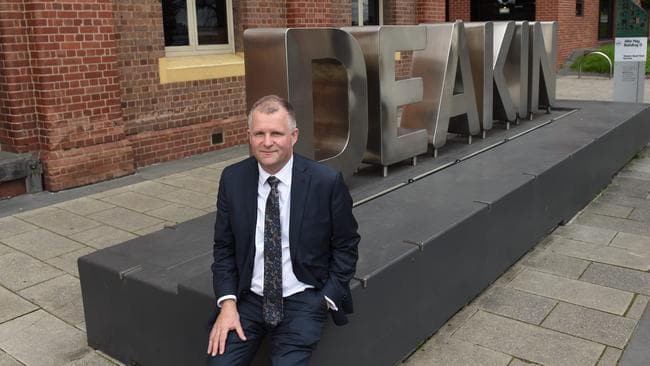Bridging the skills gap: balancing sovereign capability and foreign talent
Media release
By Professor Iain Martin, Vice-Chancellor – Deakin University
Of the many troubling economic headwinds facing the new Federal Government, the increasing skills gap remains one of Australia's most significant and urgent issues.
Not only because of the acute worker shortage being felt, but because it goes to the heart of our country's place in the world: how we contribute to and compete on the international stage.
In April last year, former Prime Minister Scott Morrison described our workforce as "the single biggest challenge facing the Australian economy". He said that we needed to train people with the right skills to remain internationally competitive.
Similarly, as one of his election promises, new Prime Minister Anthony Albanese unveiled a $1.2 billion plan to help students looking to study in sectors with severe skills shortages.
In addressing the situation, what capabilities do we need? And how can we achieve the right balance of locally nurtured talent versus importing the skills we lack? How can we continue to grow our international reputation and participation while building our critical sovereign capabilities and ensuring national security?
The temptation, felt by some, is to take advantage of our recent physical isolation from the world and concentrate on re-building our own industries and capabilities entirely from within. However, just as the previous model of seeking cheap, seemingly easy immigration solutions to local skills problems has been exposed as short-sighted by the pandemic, this purely inward-looking approach poses similar shortcomings.
As Treasurer Jim Chalmers noted in one of his first significant interviews in the role, Australia must invest in local training while also looking for quality skills via migration to address critical gaps.
Balance is the key.
Our future economic and social prosperity depends on our ability to create new industries and employment sectors. Foremost, we need to diversify the Australian economy. We are among the least complex economies in the OECD and must reverse our drift backwards over the last 20 years (from 30th to 73rd between 1999 to 2020).
These new industries will require educated and skilled workforces that, in the short to medium term at least, we cannot meet from onshore supply alone. In some key professions, we simply cannot meet the skills demand from domestic student demand alone. This is true across universities, TAFE and VET.
Skilled migration must complement domestic skills and education, focusing on the quality of skills and qualifications and matching the nation’s actual needs. That focus on quality, not quantity, is necessary for a system to complement domestic education, skills and training, emphasising outcomes across the Australian community – a system working for all. It must be about national needs, not merely sectoral wants or preferences.
We cannot return to conditions pre-COVID, where international education faced real community concerns over quality and benefit. But just as truly, if we adopt a restricted border mentality, we stand no chance of attracting the talent we need, the skills gap will grow ever wider, and our global competitiveness will wane.
The solution to all this lies with the triangular powerhouse: education providers, including universities, TAFE and VET, working in partnership with state and federal governments and industry.
Each sector has a vital role to play – from skills and policy settings to meaningful, rewarding careers, as well as a responsibility to deliver. From opportunities to outcomes, we must all play our role and be accountable for it.
Together, we need to work more effectively with industry to map education and skills gaps and match to courses and graduates – both domestic and skilled migration. This is not about complex and long-term workforce modelling but a highly responsive system that looks at short, medium and longer-term interventions to support our communities and the economy.
Specifically, a funding and policy mechanism that is rapidly responsive to shifts in need and flexible to differing community shortages and opportunities across a working lifetime, not just immediate post-18 qualifications. We need a national education and skills approach that systematically links universities, TAFE, VET sector and skilled migration to best meet the nation’s needs as a whole.
This won't be easy, and undoubtedly not everyone will like the solution – particularly being responsible for their outcomes, but it must happen for the national good. Done well, this three-way partnership will help address the challenges of now. In addition, it will be agile enough to respond to future changes and challenges, enabling us as a nation to continue to adapt and succeed.
As published in The Australian on Wednesday 15 June 2022.

